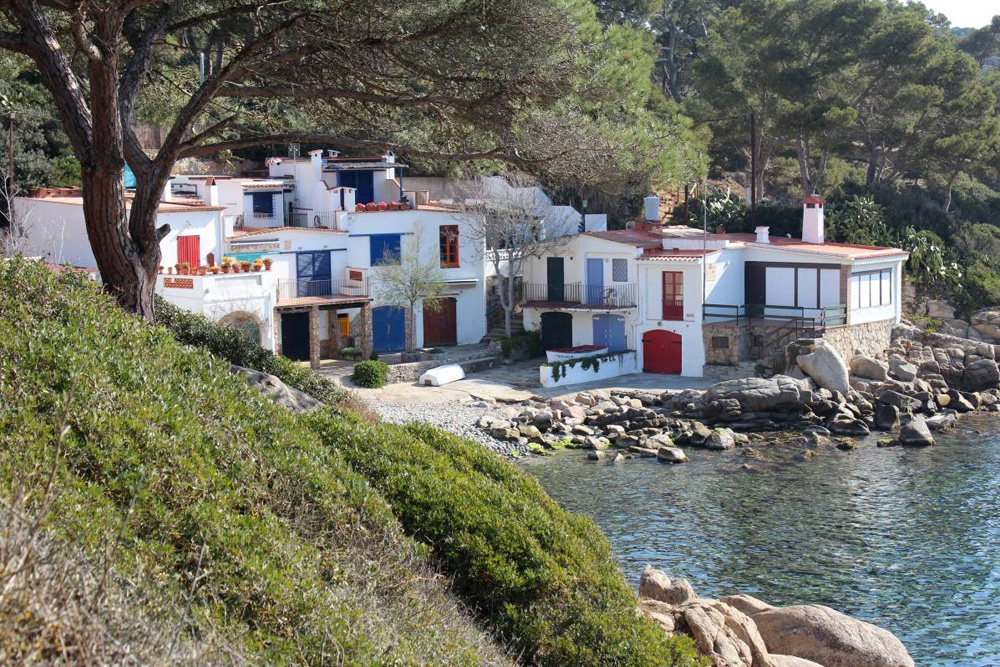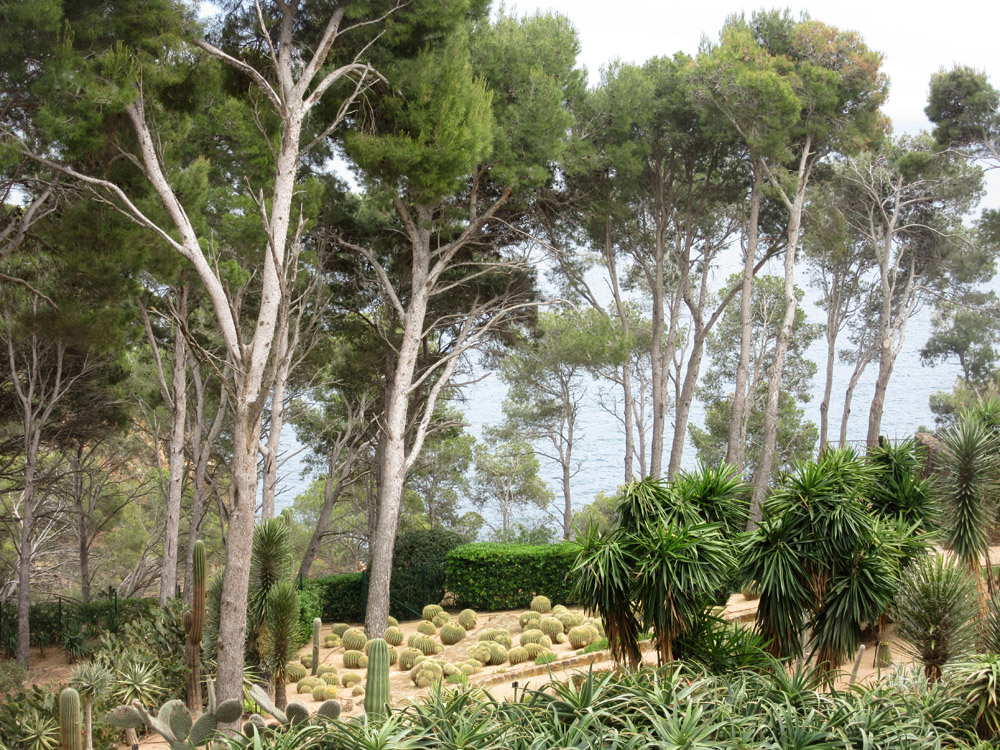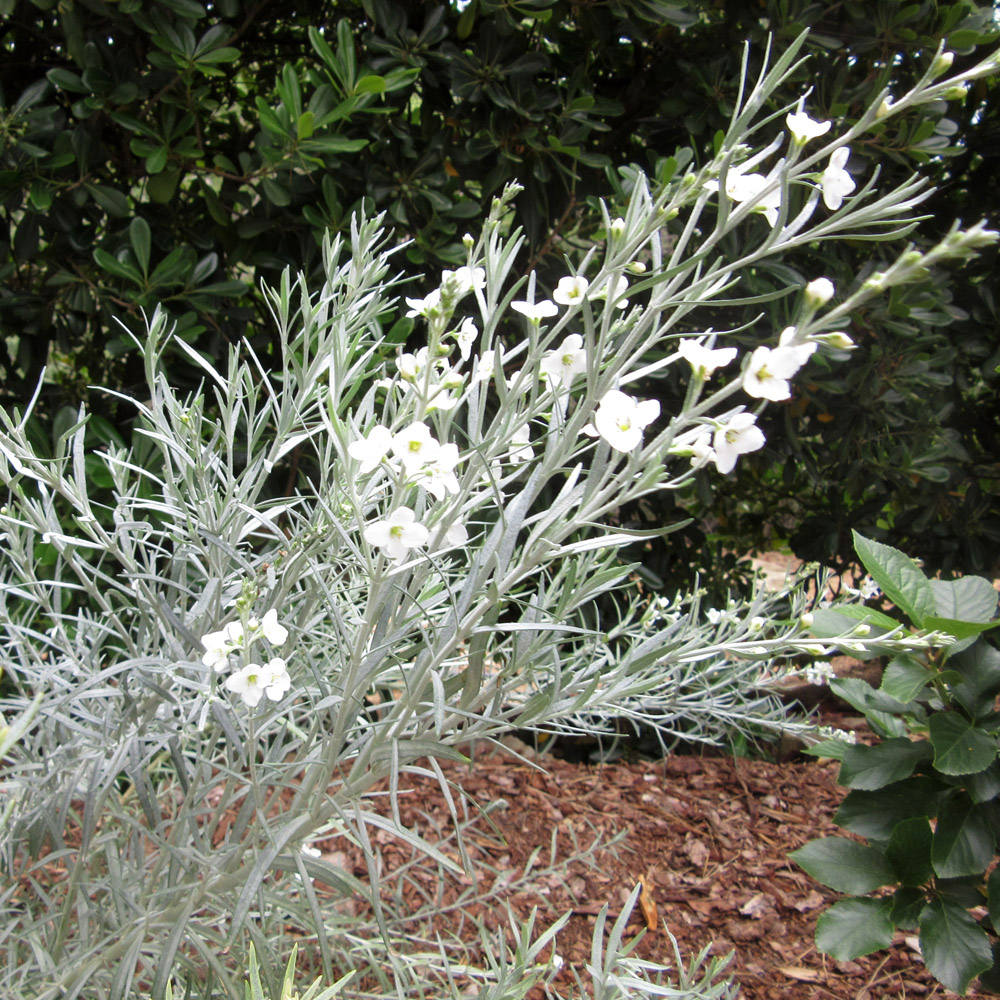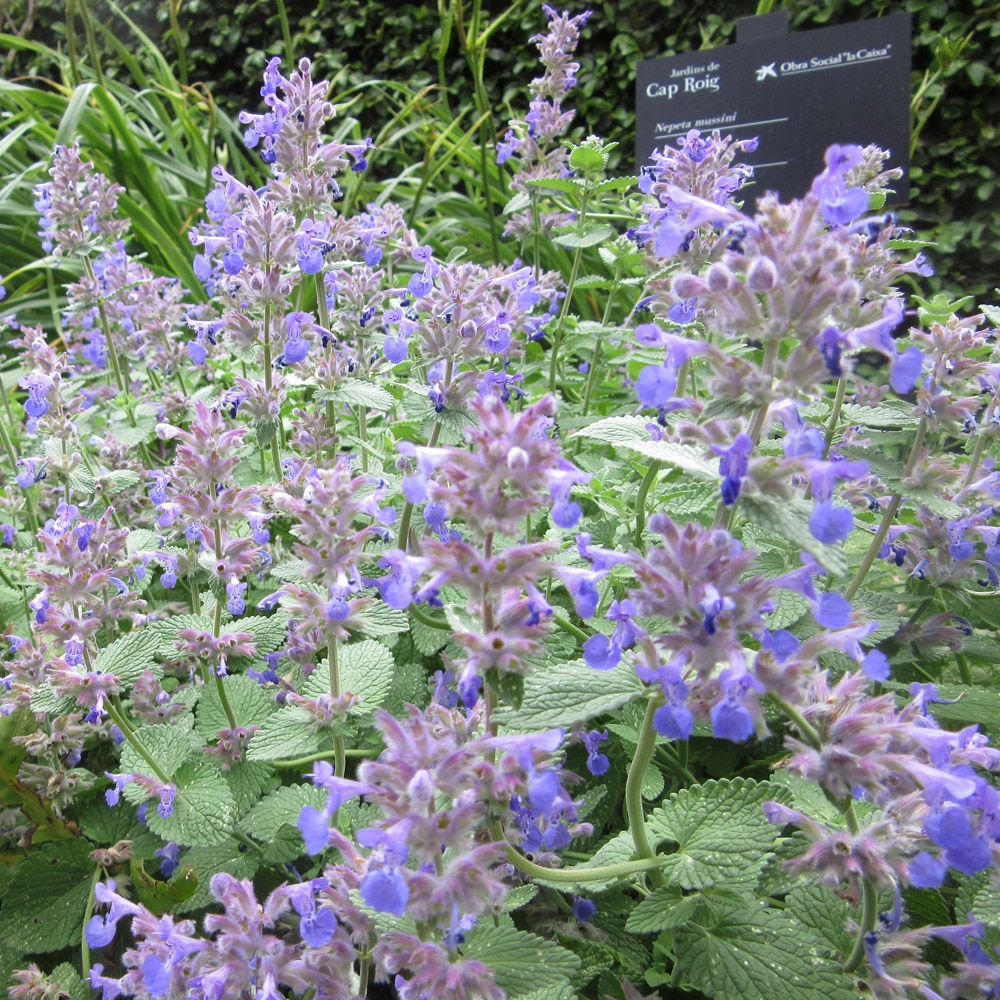May 2019 – Pre-AGM trip to Catalonia
Click on an image to enlarge it / Cliquez sur une image pour l’agrandir
Two days of walks, garden visits, and delicious food and wine organised by André Guiraud, Jennifer Hastings and Kevan Kristjanson. We were based in Platja d’Aro, on the stunning Catalan coast.
For those with access to the MGi Forum, there is an album of additional photos from this trip, contributed by a number of participants. To access it, log on to the Forum in the usual way and scroll down to ‘Photo Share’.
An energetic hike on the Costa Brava
As part of the 2019 MGF pre-AGM outing, a group of 14 hikers took on a small portion of the famous ‘CamÍ de Ronda’ (which can be translated as ‘path of the rounds’ or ‘customs trail’). Starting at the recently done-up Platja de Castell we first walked to the beautiful and colourful fishing hamlet at Cala s’Alguer.
The main part of the hike saw us cross the Platja de Castell to find the Camí de Ronda, taking us high above the spectacular coast. Diverting slightly from the main part of the Camí brought us closer to the cliff’s edge with views to the sea, great visual pleasure paid for dearly by the intense climb to get back to the main path.
Our destination, the beach at Cala Roca Bona, was reached at a perfect time to enjoy our picnic lunch and for some, a brief swim in the sea.
After our refreshing break we returned by the same path, although the views were quite different walking in the other direction. Just past the Cala de Senià half the group chose the inland ‘Camí Antica’ (old path) and were rewarded by the unexpected ‘Barraca de Salvador Dalí’ (Dali’s cabin), built for him by his friend, Alberto Puig Palau, to be used as a studio. Those who returned by the sea path visited the ruins of the 6thc.BC Poblat Ibèric de Castell (Iberian village of Castell).
A few plants observed along the way…
Text and photos: Kevan Kristjanson
The Jardí Botànic de Cap Roig
The gardens of Cap Roig were created in 1927 by a Russian colonel, Nicholas Voevodsky, and his English wife, Dorothy Webster. They are set in a unique location, 17 hectares along the Mediterranean Sea, and are now home to almost 1000 botanical species from all over the world.
In their will, the Voevodsky family left the ownership of the gardens and the castle where they had lived to the ‘la Caixa’ Foundation which now maintains and preserves the site.
The entrance to the garden is like a small Mediterranean village square, with small houses where the workers and gardeners and their families used to live. The first flowers we saw along the path were some magnificent bougainvilleas.
At the top of the terraces a Cedrus atlantica overlooks a variety of roses and alongside the path, Trachelospermum jasminoides. We then approached the palm tree garden where we admired the view towards the Formigues Islands and the giant cycad palm (Macrozamia moorei), beds of grasses and a large selection of rock plants.
At the end of the path is the castle, reddish in colour, where renovation works are underway so it is not open to visitors. This is also the location of an open-air auditorium, hosting a music and dance festival.
Next we came to a pond with some Cercis siliquastrum, olive trees and dwarf pomegranate bushes (Punica granatum). A number of different garden rooms have been created, each with its own character and a different planting scheme – the Lovers’ Garden with hydrangeas and gardenias, the square Colonel’s Garden filled with Santolina chamaecyparisus and the Corporal’s Garden, encircled by a hedge of Viburnum lucidum.
Following the Cap Roig Path we came to an area planted with a wide variety of mature cactus, aloe, agave and succulents, then to the Formigues Mirador with a stunning view of the coast and the islands.
Turning towards the castle, the path then led us past a wide selection of aromatic pelargoniums backed by Banksia integrifolia and different types of dogwoods to a square where apparently the Voevodskys used to take tea while looking out to sea.
The garden is beautifully maintained and almost all of the plants are clearly labelled. It was looking stunning for our visit at the end of May, but due to the very wide variety of mature plants it would be worth visiting again at different times of the year to fully appreciate all it has to offer.
Here are a few plants which were at their best when we were there:
Text: Hedwige Lauwaert
Photos: Christine Daniels
Jardí Botànic de Marimurtra, Blanes
Ascending the steep and winding lane above Blanes we had no idea that hidden within the walls of Marimurtra Botanical Garden we would find 4000 plant species, most of them exotic ones, as well as several specimen palms and pines that are extraordinary because of their age or size.
Marimurtra is the work of a man with a passion for nature. Carl Faust (Hadamar, Germany 1874 – Blanes 1952), was a local businessman who devoted his hopes, his efforts and all his fortune to make his dream come true within the Botanical Garden of Marimurtra.
Nowadays the garden focuses not only on areas with a Mediterranean climate but also boasts a large and very imposing cactus and succulent garden containing magnificent specimens from the arid zones of America.
Coupled with breathtaking viewpoints from the cliffs out across the sea, this is an informative garden in a lovely setting and makes a very worthwhile visit when in this part of the Costa Brava.
Text: Sara Robinson
Photos: Christine Daniels
Jardins de Santa Clotilde, Lloret de Mar
After the exuberance of the other Costa Brava gardens, the restrained Italian Renaissance style of the Jardins de Santa Clotilde came as a welcome surprise – a fabulous site sloping steeply to the sea, deeply green and shady with mature cypresses and stone pines, lawns enclosed by hedges, long vistas punctuated by statues, benches and fountains.
Designed by Nicolau Rubió i Tudurí for the Marquis de Roviralta in 1919, this garden is not a pastiche, but a manifestation of some of the principles of the Noucentisme movement in early 20thc. Catalan culture. The term neatly combines a reference to the ‘nineteen hundreds’ in the Italian tradition with the word for ‘new’ (nou means both ‘nine’ and ‘new’ in Catalan) – a movement of renovation, whose guiding principles, including classicism and civility, would help to create an ‘ideal’ Catalonia. Its adherents believed that perfection of form and proportion were not just abstract ideas for literature, but should extend to all areas of life for civilising effect. Harmony and structure such as that of the Jardins de Santa Clotilde represent civility in contrast to the perceived ‘barbarism’ of the countryside, and emphasise Catalonia’s links to a common Mediterranean and classical cultural heritage.
We were perhaps less impressed by the philosophy behind these lovely gardens than by their quiet and almost austere design. We loved the long flights of steps with simple dark green ivy running between…
We loved the statues and benches…
the air of calm….
…but most of all we loved the constant views out towards the sea.
Text and photos: Sandra Cooper
![]()








































